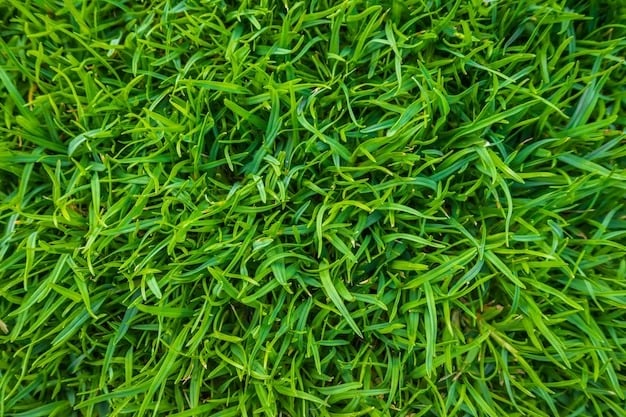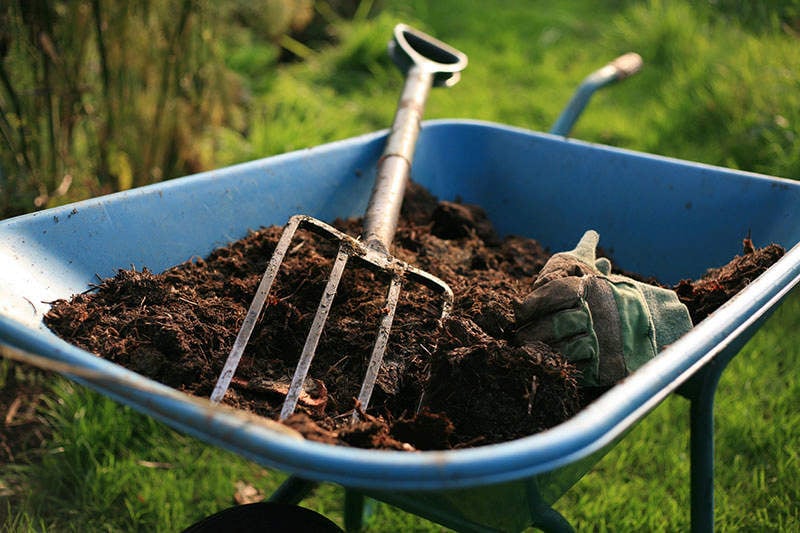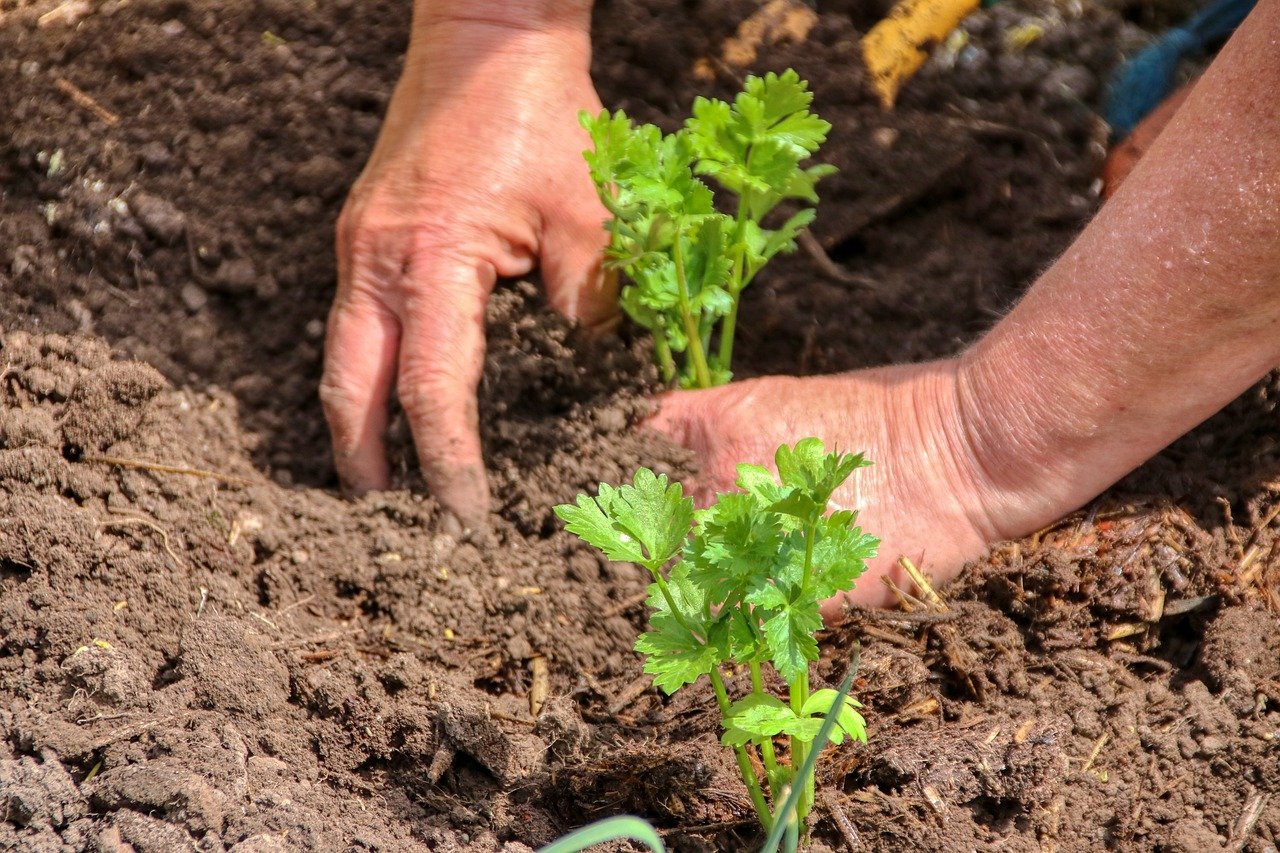How and When To Mulch a Garden Effectively [UK]
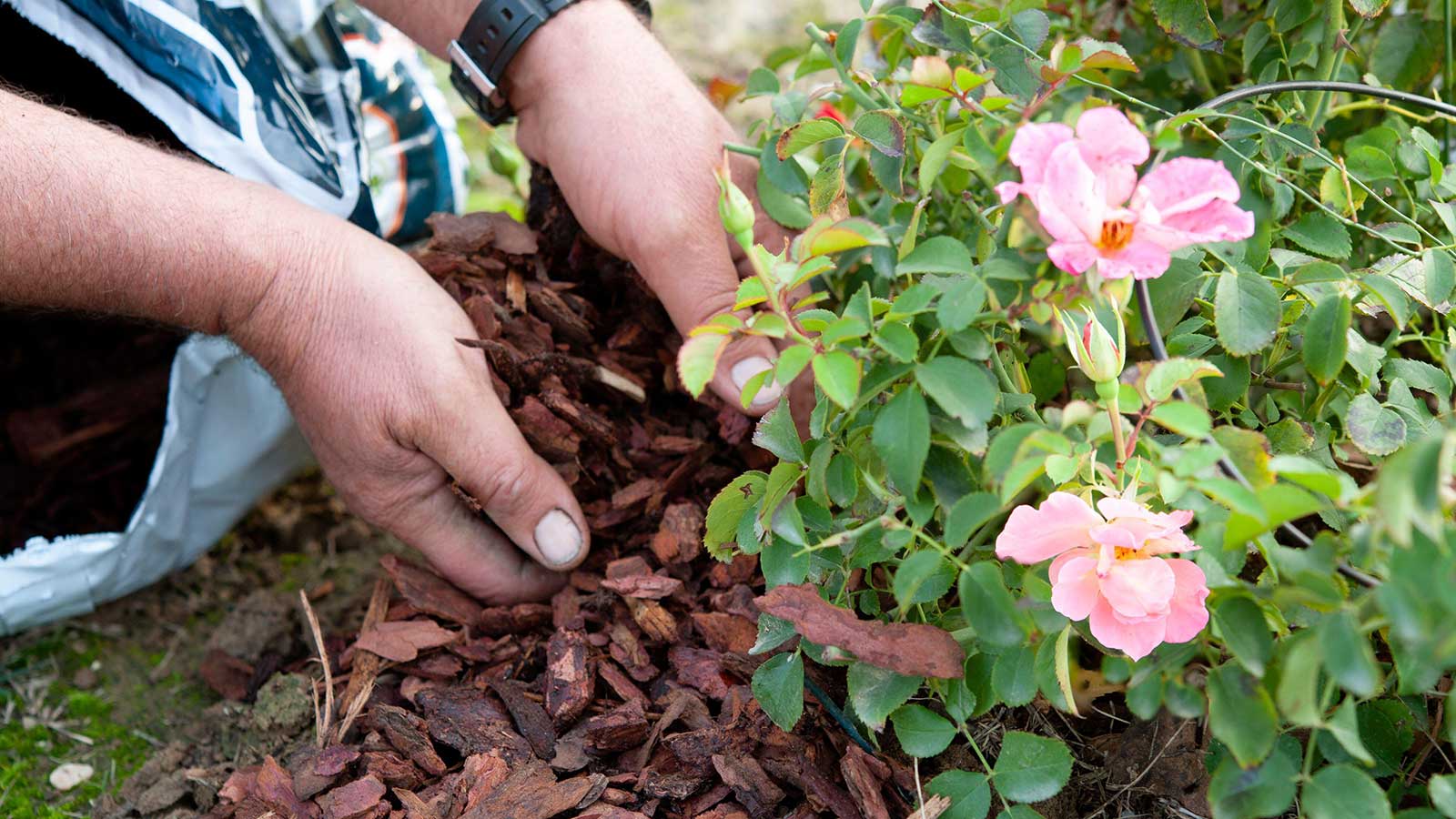
Table of Contents
Mulch is a favourite word of the gardeners and for all the good reasons. Just by mulching, you can improve the soil’s health and vitality of the plants and reduce weeds. It is one of the best gardening practices that ensure the top health of the soil throughout the year. In spring, mulch locks in the moisture and feeds the soil. In winter, it protects the bare soil and plants and prevents erosion.
Mulching is considered to be the gardener’s best friend. It makes the garden look more beautiful and fresh. If you also wish to have a pretty garden that you and your family can maintain throughout the seasons and cherish, then you must learn about mulch. And if you do not know how to mulch, when to mulch a garden, and what to use while mulching, then this article is the perfect guide for you. Read below to learn more about mulching and how to do it effectively.
You are just one step away from creating the garden of your dreams. So let’s read on!
What Does the Word Mulch Mean?
Mulch is a thick layer of any material that is used to cover the surface area of the soil. It is often made from natural materials like leaves, straw, compost, and wood chips. Some synthetic materials are also available for mulching, like plastic sheets, rocks, or rubber.
It acts as a physical barrier to the soil, protecting it from the drying winds and direct sun. There are many sustainable and ecological benefits attached to mulching. It has become a necessity in today’s gardening world.
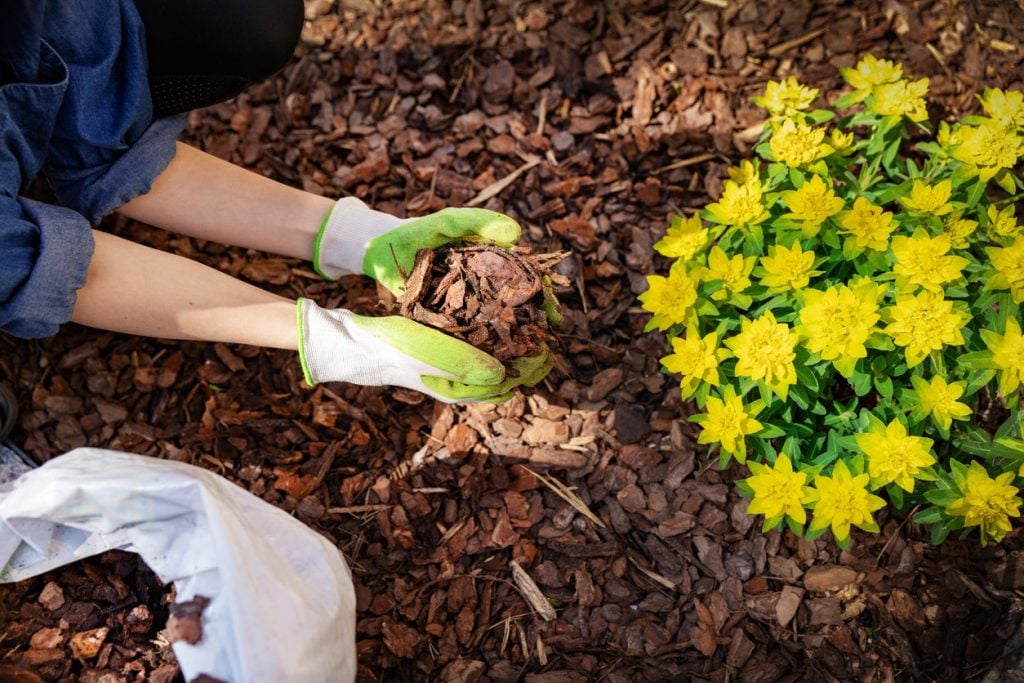
How to Apply Mulch in Your Garden Effectively
Mulching is a quite simple task that can give many benefits to your garden if done properly. You can mulch the Beds and borders entirely; make sure not to smother low-growing plants or pile up the mulches against the stems of woody plants.
- Appling the biodegradable mulches onto the bed or around the key plants is easy; just make sure to keep the thickness of the mulch’s layer between 5cm (2 in) to 7.5cm (3 in).
- Lay mulch when the soil is moist, after removing weeds, and not when the soil is frozen.
- You can use your hands or spade to lay the mulch, depending on the materials you choose for the mulching.
- After laying mulch, use a rake or hoe to make sure the mulch is evenly distributed.
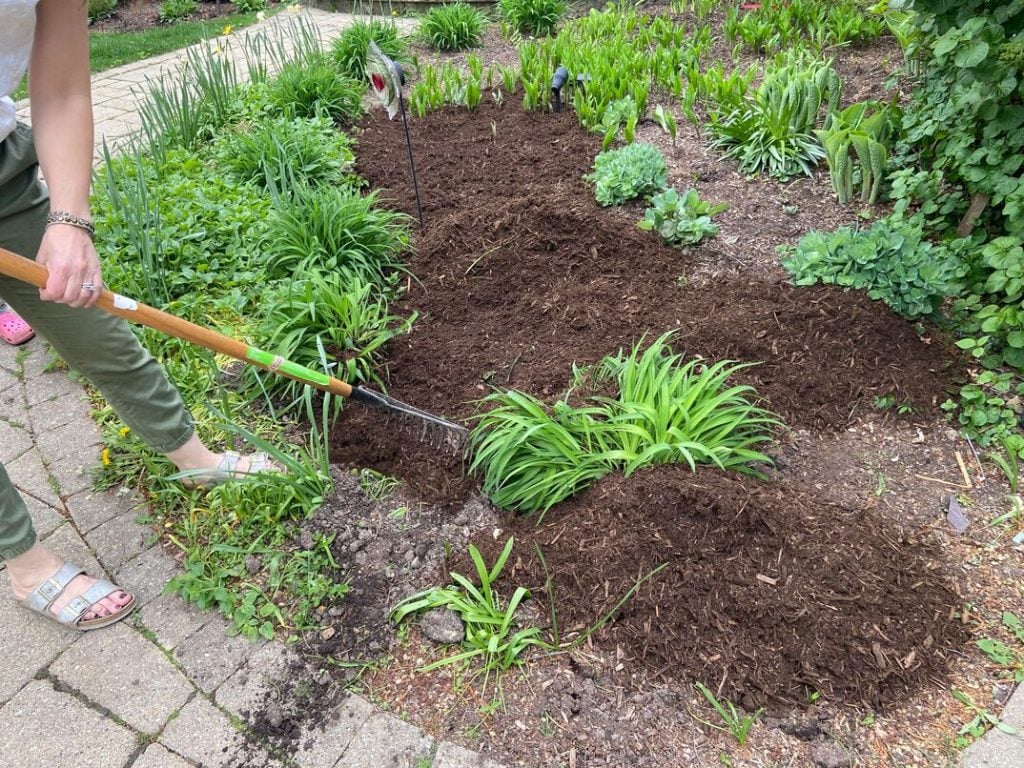
Farmyard manure and compost are best for mulching around perennials and vegetable beds. Whereas woody mulches like bark chippings tend to break down more slowly than manure and compost, so it is ideal to use them for shrubs and trees.
Make sure to prepare the soil before mulching, as it can be beneficial in the long run. Rake the surface of the soil to level out the dips and hollows. Also, water thoroughly to ensure the moisture in the soil before mulching.
When to Mulch the Garden
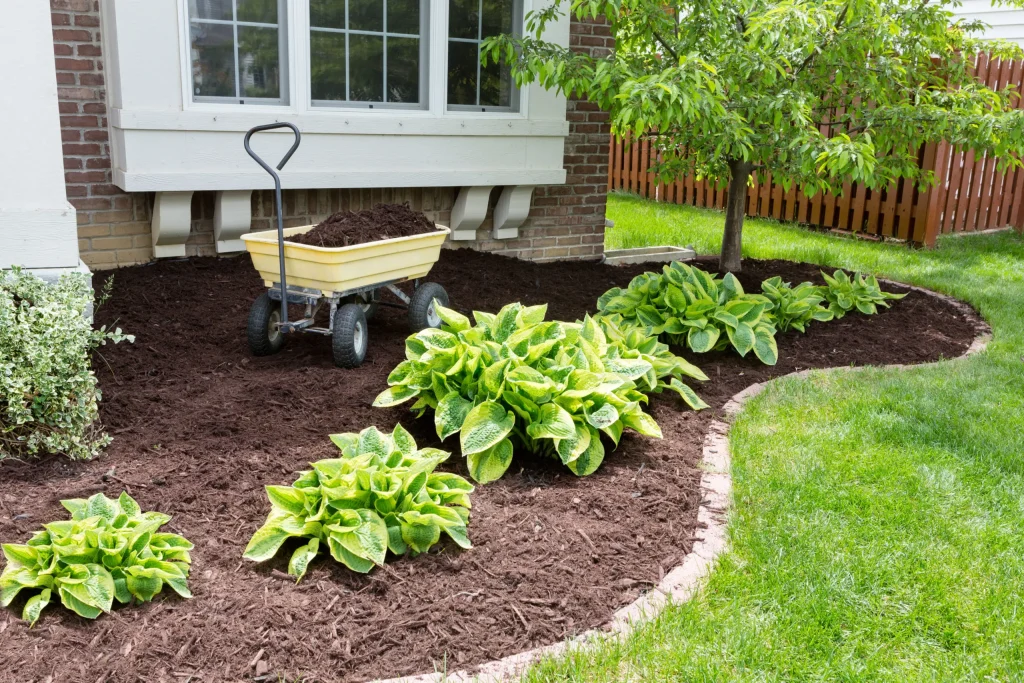
Mulching is usually done between autumn and spring. The best time to mulch the garden in the UK is either during April or September. It is the time when the soil is all warmed up and is most active during these months.
Soil is a living and breathing organism, and it changes many times from spring to autumn. There are several benefits of mulching during these specific times of the year.
- In autumn or winter, the soil is usually damp, and mulching will ensure moisture in the soil even during the dry spring.
- Using a biodegradable mulch in autumn will allow time for it to get settled onto the soil and make it ready for spring planting.
- It is always a good idea to add a layer of mulch whenever you are planting a new plant.
Benefits of Mulching
Mulching has a lot of benefits. It can do wonders for your garden and its soil health. So let’s read some benefits of this amazing and useful weapon named mulching.
- Mulching retains water which in turn helps in saving a lot of water, time, and money. Especially in hot weather, a garden that is mulched nicely needs less water, and plants should not be susceptible to wilting. It prevents evaporation from the surface of the soil.
- It suppresses weeds by blocking out sunlight and preventing weed seeds from germinating.
- Natural mulch materials like compost, fine bark, or straw slowly break down and gradually gets assorted into the soil, which provides fresh and organic nutrients.
- It protects plants from harsh conditions of winter freezes, thaws, and winds.
- The cycling of nutrients, when paired with improved moisture content, directly leads to enhancing the beneficial microorganism and worm activity. Overall, it increases the soil fertility.
Types of Garden Mulch
There are many types of garden mulch available in the market that you can use according to the outcome that you require. Ornamental flower beds may require chipped bark to reduce weeds or gravel, whereas growing vegetables may use high-feed mulches.
However, two basic types of garden mulch are biodegradable (organic) and non-biodegradable (stone, inorganic materials). Each mulch has its benefit, and you should choose according to your garden and the preferable outcomes you want from it.
Biodegradable Mulches
Biodegradable mulches are natural organic products from trees, leaves, grass and other plant materials. They gradually break down over time. The best advantage of this mulch is that it truly adds organic matter to the soil.
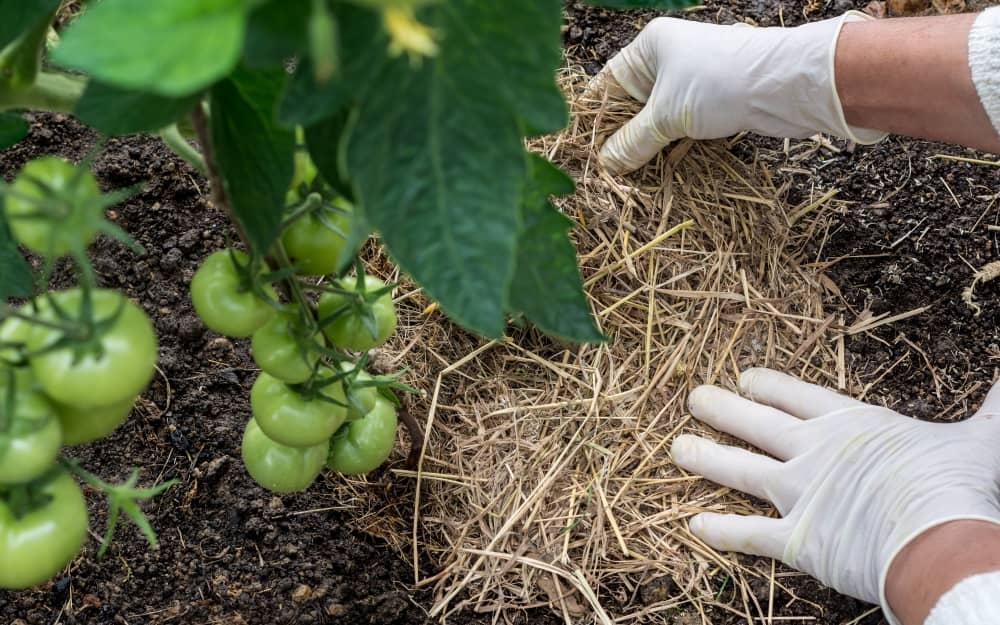
- Compost – It is readily available and breaks down rapidly to improve the soil. Peat-free compost is the best form of mulch as it contains high levels of nutrients. It retains a lot of moisture and is easily absorbed into the soil by beneficial earthworms and bacteria. Homemade compost is also a great mulch to use for your garden. Make sure to replenish it timely.
- Shredded leaves or Leaf mould – It is one of the best multi-purpose mulches to use for your garden. It is light in weight and can be moved easily from one place to another. Leaf mould is made from fallen leaves and takes around 12-18 months to make. It is a great way to recycle and is pretty useful for bringing on germinating seedlings.
- Straw or Hay – It can be used to maintain moisture in the soil. They both are inexpensive and helpful in covering the ground. However, they decompose quickly and may harbour rodents.
- Pine Needles – It is a very good example of organic mulches. They are slow to break down.
Non-Biodegradable Mulches
Non-biodegradable mulches are inorganic and man-made. It includes stones, pebbles, gravel, slate, seashells, and tumbled glass. They do not break down in the soil, so they don’t ruin the structure. It helps in suppressing weeds and reducing water loss.
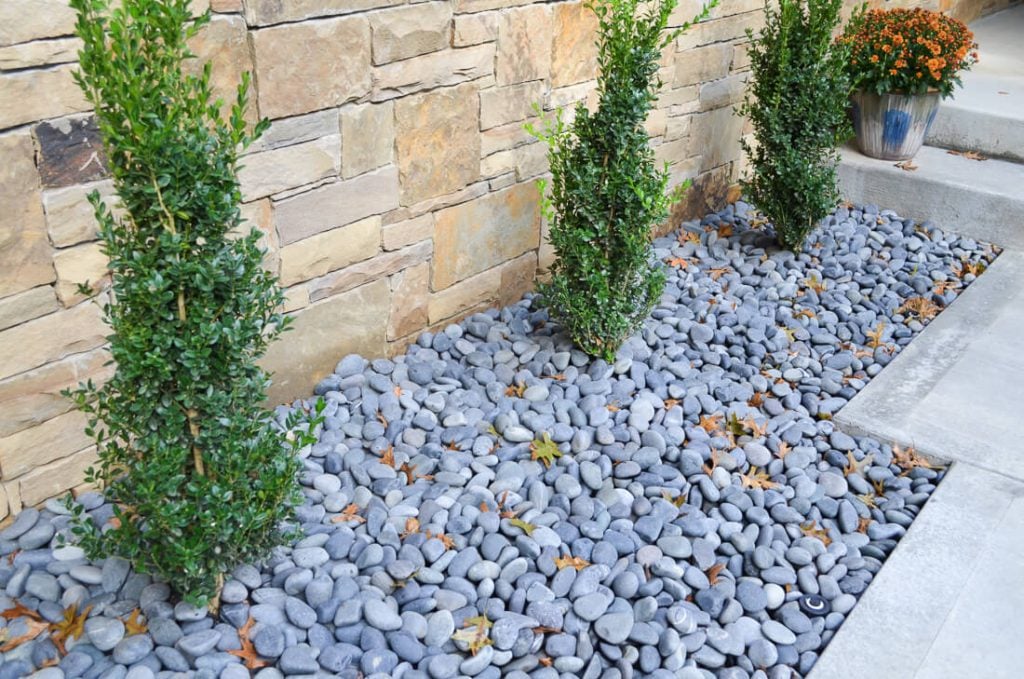
- Gravel or stones – They are particularly useful as mulch for pond plants and alpine plants. It helps in reducing soil disturbance and assists the drainage. They have no nutrients that will transfer into the soil except for the fact that they will suppress the weeds and keep the moisture in.
- Landscape matting or weed membrane – You can use landscape fabric as a mulch for your garden. They are usually laid before the plants are dug into the ground. It is a great way to keep the moisture locked in and acts as a solid covering.
How Long Does the Mulch Last
Different kinds of mulches last for different time durations depending on the percentage of organic matter in them. Leaf mould lasts around 6 months as a mulch, and compost lasts around one year. Chipped bark lasts around 2-3 years as mulch before breaking down. So let us see with some mulch examples like how much they last and their nutritional value for soil health.

- Compost – Fastest to break down and have the highest nutritional value release.
- Leaf mould – Fastest to break down and have slow release medium nutritional value
- Straw – Slow to break down and have less nutritional value compared to the other mulches.
- Gravel – It lasts the longest, never breaks down, and has no nutritional value.
- Landscape matting – It is very slow to break down and has no nutritional value. It can contaminate the ground.
Conclusion
Mulching is essential to gardening, as we all learnt from the above-presented information.
If it is done properly, it can do wonders for your garden. We hope that you liked our tips and suggestions for mulching in the garden.
Make sure to include mulching, as it is an important part of the gardening journey.
Following the steps for perfect mulching and choosing the right one for your garden is the best way to prepare your garden for the amazing planting season.
So let’s not wait and start the mulching process immediately. Good luck and happy gardening!

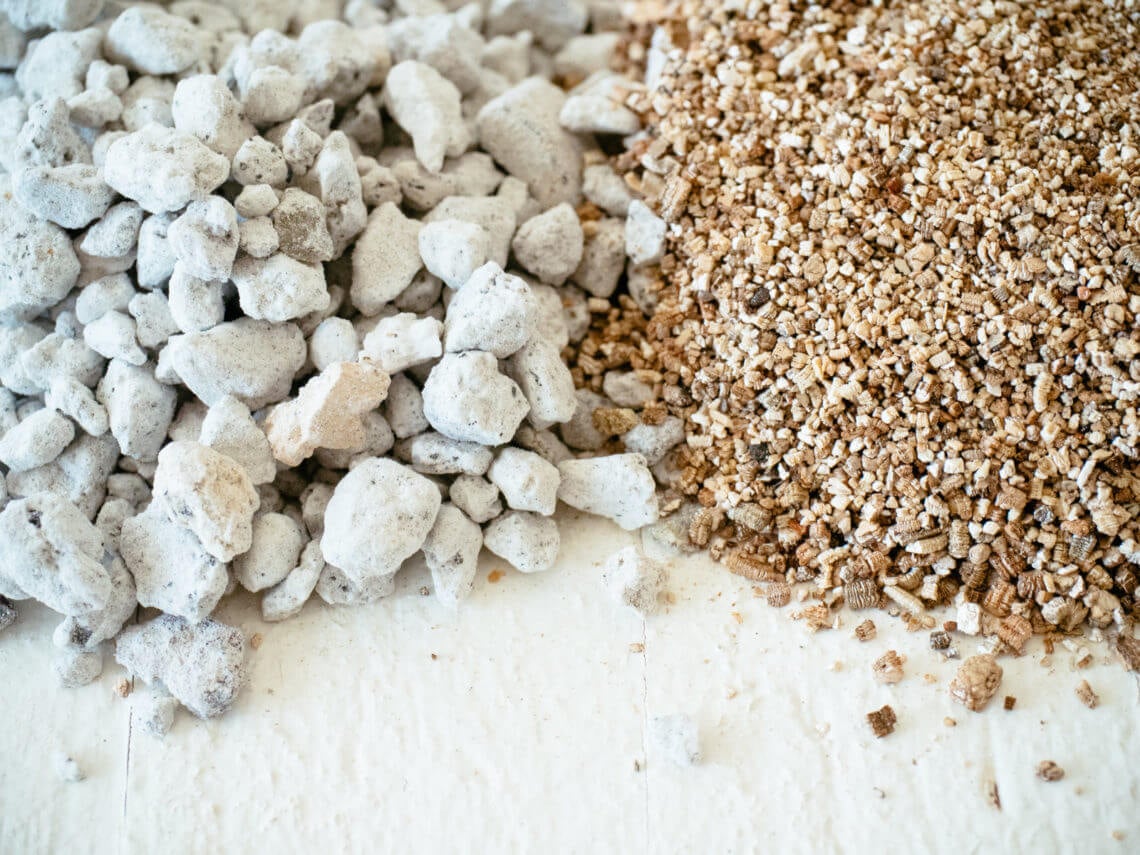
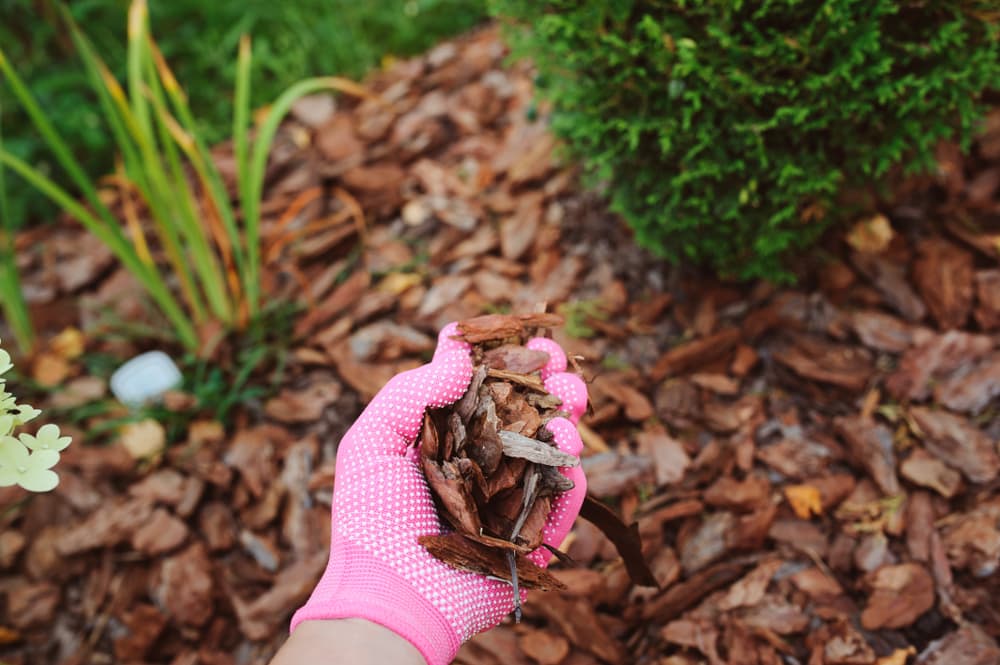
![How to Kill Overgrown Ivy in 5 Easy Steps [UK]](https://staging.thearches.co.uk/wp-content/uploads/How-To-Kill-Get-Rid-Of-Overgrown-Ivy.jpg)
